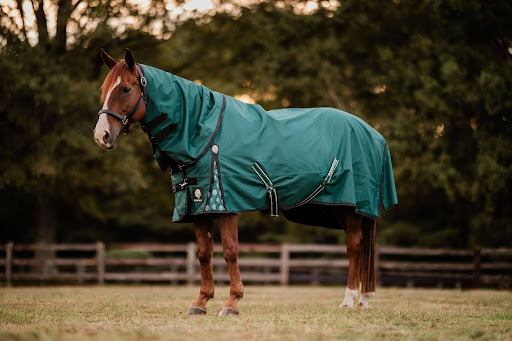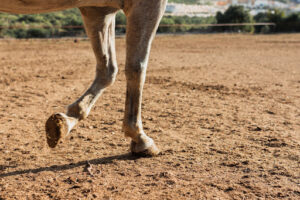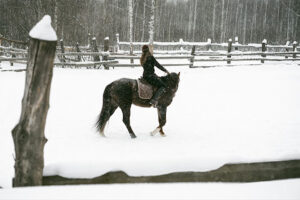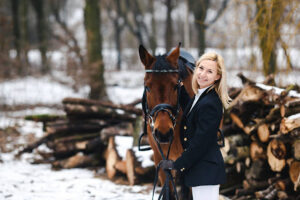Turnout or Stable? Choosing the Right Blanket for Your Horse
When temperatures drop and the weather turns unpredictable, one of the most important decisions you’ll make for your horse’s comfort is selecting the right blanket. But here’s where many horse owners get stumped: should you go with a turnout blanket or a stable blanket? The answer isn’t always straightforward, and picking the wrong type can […]

When temperatures drop and the weather turns unpredictable, one of the most important decisions you’ll make for your horse’s comfort is selecting the right blanket. But here’s where many horse owners get stumped: should you go with a turnout blanket or a stable blanket?
The answer isn’t always straightforward, and picking the wrong type can leave your horse either shivering in the cold or overheating under too much insulation. Let’s dive into everything you need to know about horse blankets so you can make the best choice for your equine companion.
Understanding the Basics: What Makes Them Different?
Think of it this way: turnout and stable blankets are like outdoor winter coats versus cozy indoor sweaters for your horse. Each serves a distinct purpose, and knowing when to use which one can make all the difference in your horse’s comfort and health.
Turnout blankets are the tough, all-weather warriors of the blanket world. They’re specifically engineered for outdoor use, featuring waterproof materials that protect against rain, snow, sleet, and wind.
If your horse spends time in the pasture or paddock, especially during wet or unpredictable weather, waterproof horse blankets are non-negotiable. These blankets typically use heavy-duty nylon with denier ratings between 600 and 2100D, which means they can withstand everything from rough play with pasture mates to scraping against fences.
On the flip side, stable blankets are designed for indoor comfort. They prioritize warmth and softness over weatherproofing, using lighter materials like cotton or fleece. Since they’re meant for stalls and barns where your horse won’t encounter rain or snow, they don’t have waterproof coatings. This makes them more breathable and comfortable for extended indoor wear.
The Ultimate Horse Blanket Buying Guide: Key Features to Consider
When you’re shopping for the best horse blankets for winter, understanding the features that matter most will save you time, money, and potential headaches down the road.
Waterproofing and Durability
For turnout blankets, waterproofing isn’t just a nice-to-have feature—it’s essential. A wet horse loses body heat rapidly and can develop skin issues if moisture gets trapped against their coat.
Quality waterproof horse blankets feature specialized coatings and ripstop construction that prevent tears from spreading, even when your horse decides to test its durability through vigorous rolling or playing.
Stable blankets don’t need this weatherproofing since they’re used in dry environments, but they should still be durable enough to withstand regular wear and washing.
Weight and Fill Options
Here’s where things get really interesting. Horse blankets for winter come in various weights, measured by the grams of insulating fill inside. Understanding this system is crucial for matching the blanket to your climate and your horse’s needs.
Light blankets typically contain 100 grams or less of fill and work well for mild winters or horses with thick natural coats. Medium-weight options range from 150 to 250 grams and suit most moderate winter conditions. Heavy blankets pack 300 grams or more and are ideal for severe cold, especially for clipped horses or those with thin coats.
The best winter blanket for horses really depends on your specific situation. A horse with a full winter coat in a moderate climate needs far less insulation than a body-clipped show horse facing frigid temperatures.
Fit and Cut
A poorly fitting blanket causes more problems than not blanketing at all. Turnout blankets typically feature action gussets and darts that allow for greater freedom of movement—critical when your horse is galloping around the pasture. The design accommodates the dynamic movement horses need outdoors.
Stable blankets have a more fitted cut since horses move less in their stalls. To measure your horse correctly, start at the center of their chest and measure straight back to the point of their buttocks. This measurement in inches gives you the blanket size you need. When in doubt, size up rather than down.
The blanket should cover just past the tail base without dragging on the ground, sit comfortably on the shoulders without restricting movement, and have adjustable straps that stay secure without being tight. You should be able to fit a hand’s width between the belly straps and your horse’s body.
Also Read: Blanketing 101
Strategic Blanketing: Making It Work Day-to-Day
Many experienced horse owners keep both turnout blankets and stable blankets in their tack rooms, and for good reason. This flexibility allows you to adapt to changing conditions throughout the day and night.
During transitional seasons, such as early spring or late fall, you may remove blankets entirely on warm afternoons to prevent overheating, especially for horses with thick natural coats. Then, as evening temperatures drop, you’ll swap in an appropriate blanket for overnight warmth.
Some horses go in and out throughout the day, which is where waterproof turnout blankets really shine. Since they’re designed for all conditions, they can transition from pasture to stall without needing a change.
However, if your horse spends long periods indoors, switching to a lighter stable blanket often makes them more comfortable.
Special Considerations for Different Horses
Not all horses have the same blanketing needs, and tailoring your approach makes a significant difference. Older horses, those with thin coats, underweight horses, or ones recovering from illness often need extra insulation. Body-clipped horses definitely require heavier coverage since you’ve removed their natural insulation.
Conversely, healthy horses with access to shelter and thick winter coats may need minimal or no blanketing except in severe weather. Overblanketing actually flattens their hair coat, reducing its natural insulating properties and potentially causing them to sweat, which then makes them colder.
Watch your horse’s behavior closely. Shivering indicates they’re too cold and need more insulation. Sweating under their blanket means you’ve overdone it and should switch to something lighter. These behavioral cues are more reliable than any temperature chart.
Maintenance Makes the Difference
Even the best winter blanket for horses won’t perform well if poorly maintained. Wash your blankets regularly using specialized blanket detergent—never regular laundry soap, which breaks down waterproof coatings. Always air-dry them since machine dryers damage the fibers and waterproofing.
Inspect buckles, straps, and stitching frequently for wear, and repair damage immediately. Small tears become big problems quickly, especially on turnout blankets exposed to rough conditions.
Store clean, dry blankets in cool, rodent-free areas during the off-season, and consider reapplying waterproof treatments to turnout blankets annually.
Also Read: Rider Spotlight: Q&A with Michel Feitosa
Conclusion
So, turnout or stable? The answer is often both. This horse blanket buying guide boils down to matching the right tool to the job. Choose turnout blankets for any outdoor exposure in wet or variable weather, and stable blankets for dry indoor warmth.
Consider your climate, your horse’s coat condition, their age and health, and how much time they spend outdoors versus in their stall. Many owners find that having at least one of each type, preferably in different weights, gives them the flexibility to keep their horses comfortable year-round, regardless of what the weather throws their way.







